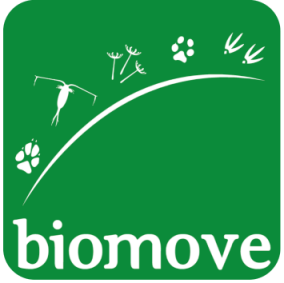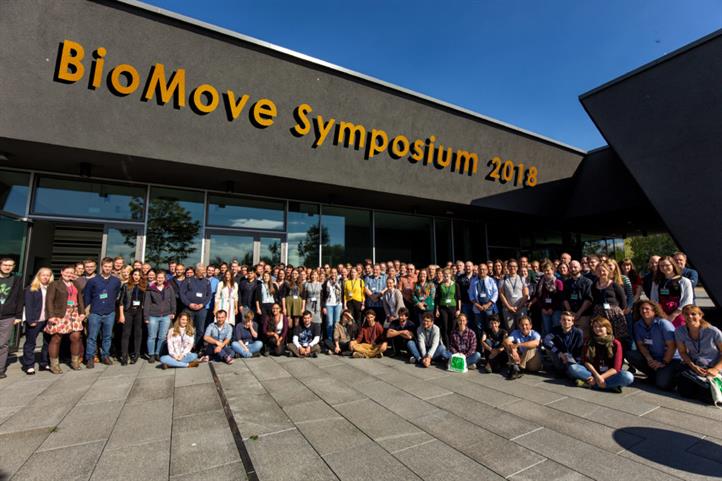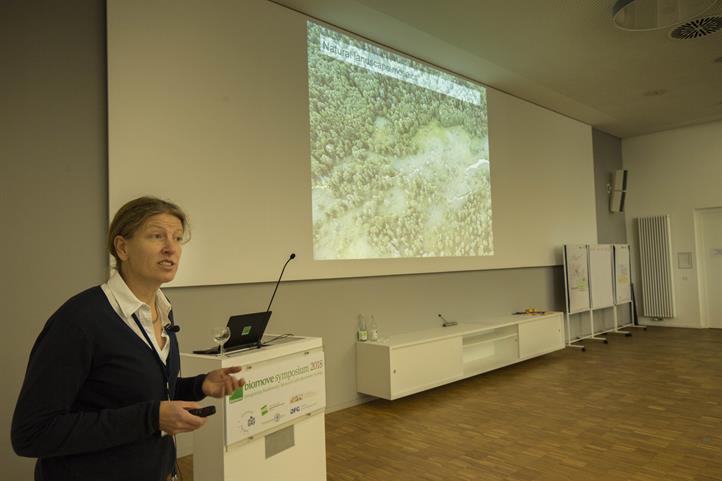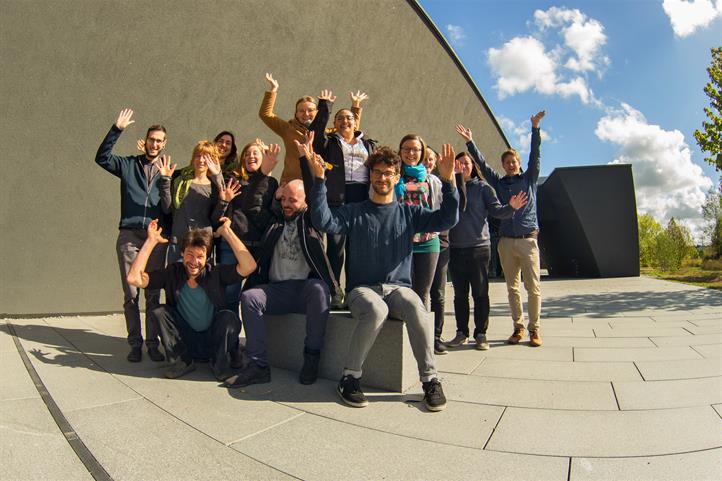
First international BioMove Symposium “Bridging Biodiversity with Movement Research“
The first international BioMove Symposium took place between the 26th and the 28th September in Potsdam. The event was completely organized and managed by the PhD students of the research training group “BioMove”, which is a collaboration of the University of Potsdam, ZALF, IZW Berlin and Freie Universität Berlin and started in 2015. The aim of the event was to discuss recent advances in the field of movement ecology and how this discipline could be combined to the topic of biodiversity research and conservation.
The event hosted more than 140 participants from all over the world. The 40 talks and scientific contributions were organized into four sessions, each covering different aspects of the discipline. The first session was called “From individuality to biodiversity”. The keynote of the session was given by Prof. Dries Bonte from the University of Ghent (Belgium). The session aimed at combining individuality in behaviours to population dynamics up to community assembly.
The second session was called “Tiny organisms travel long distances”, it aimed at looking at the dispersal of microscopic organisms and the effect of such processes on biodiversity. The keynote was given by Diego Fontaneto from the Italian National Research Centre for Ecosystem studies (ISE-CNR).
The third session called “Animal movement across scales” focused on how movements of animals could impact population and community dynamics at different spatial and temporal scales. The main notes of the session were given by Prof. Wayne Getz from the University of California Berkeley (USA).
The fourth session was guided by Prof. Dr. Nina Farwig from the University of Marburg. The session was called “Living in a landscape mosaic” and it aimed at looking on the influence of antrophogenically modified landscapes on wildlife’s movement and dispersal and which results emerge from such disturbance. The symposium showed how much potential the connections of these disciplines can have. It presented a wide diversity of talks covering a variety of taxonomic groups, from bacteria all the way up to elephants. The study of movement patterns can be meaningful to different ecological subfields. From basic research to more applied conservation efforts, the talks provided examples where movement studies have been successfully implemented within an ecological context.
During the closing remarks, guided by Prof. Ran Nathan, head of the Movement Ecology Lab of the Hebrew University of Jerusalem and editor of the journal “Movement Ecology”, the audience agreed in the need of presenting movement studies as a key subfield of ecology. Movement is a crucial aspect to consider when talking about biodiversity, population and community dynamics. The research path has been drawn, and “BioMove” Symposium 2021 has been announced.
Infomaterial und weiterführende Informationen:
Bildmaterial
Zum Download der Bilder bitte auf das entsprechende Bild klicken und über
 herunterladen.
herunterladen.

First international BioMove Symposium: Quelle: © Pierluigi Colangeli

First international BioMove Symposium: Quelle: © Pierluigi Colangeli

First international BioMove Symposium: Quelle: © Pierluigi Colangeli
